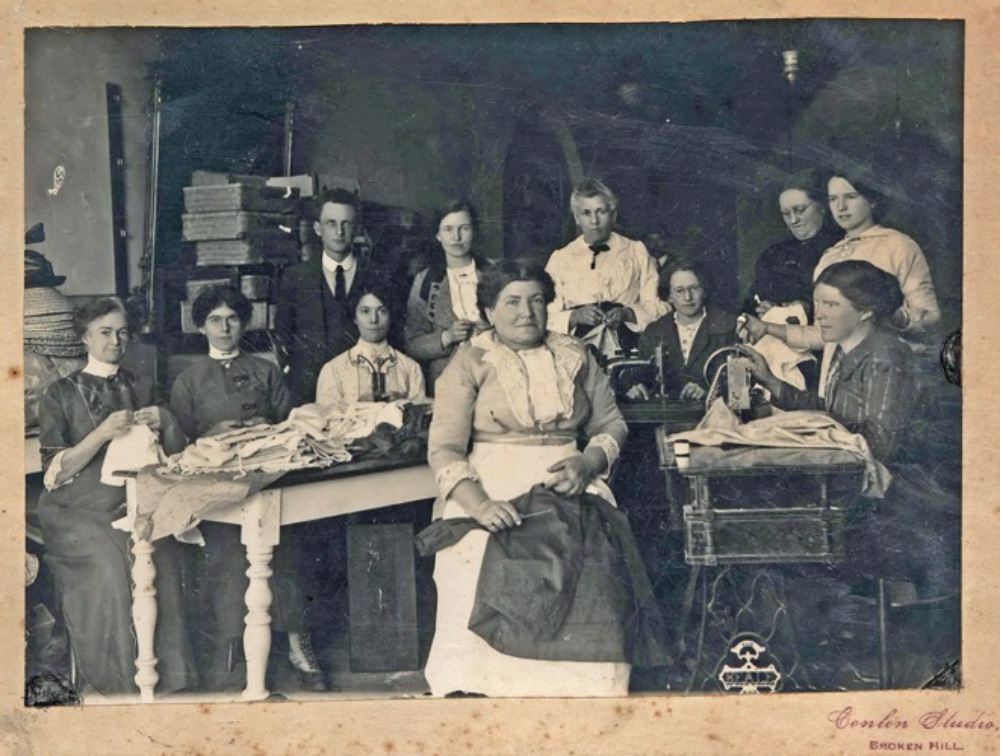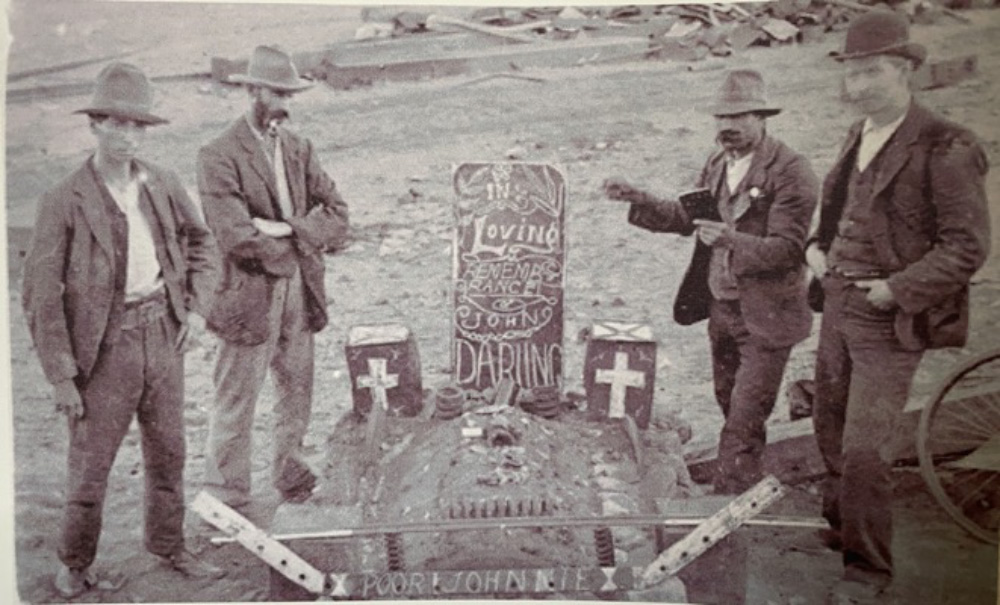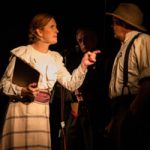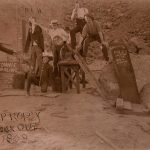


Welcome to broken hill history
EXPLORING THE STORIES OF AUSTRALIA’S FIRST HERITAGE CITY
History projects
‘United We Stand’ Heritage Performance
In this entertaining short live show, you’re invited to step back in time to May 1919, and explore the city’s mining past as you join local actors in a ‘union meeting’ of the Amalgamated Miners Association (AMA), set on the eve of the strike action that changed Australia forever. Building on previous strikes, the ‘Great Strike’ saw the community work together in solidarity for 18 months between May 1919 and November 1920 to strike against unsafe working conditions and low wages in the Broken Hill silver mines. This action remains one of the hardest-fought industrial disputes this country has ever seen. The coordinated efforts by workers and their families paved the way for better pay, safer working conditions, and a workers compensation scheme for injured workers. These agreements formed the platform for our current national WHS and Compensation Acts, and contributed to Broken Hill being named Australia’s first Nationally Heritage Listed City in 2015. ‘United we stand’ tourist play was commissioned for the Indian Pacific off-train experiences by Journey Beyond, and has been seen by around 10,000 passengers since it’s inception in April 2017? The show has since been performed by an increasing number of local actors who have helped highlight this important part of our local and national heritage. The shows have now been performed in the community at events including the Broken Hill Heritage Festival ‘Heritage Highlighted’ event, Mundi Mundi Bash fringe in town square, and to open a concert in Trades Hall. In addition, the success of the show lead to a successful NSW Government Heritage Grant, ‘United We Stand: Strikes Scabs & Solidarity in Broken Hill’, which saw the concept expanded to include the development of props and costumes to produce Augmented Reality Postcards featuring recreations of the 1909 Lockout and early Picnic Days. For more information contact UWS@brokenhillhistory.com Download the script [LINK / download]View photo gallery [LINK to gallery]
Strikes, Scabs and Augmented Reality in Broken Hill
Postcards were the ‘Social Media’ of years gone by. See history come to life through the development of reproduction props, costumes, and Augmented Reality Postcards inspired by famous Broken Hill postcard photographs featuring short video clips produced locally for ‘United We Stand: Strikes Scabs and Solidarity in Broken Hill’. INSERT PIC OF one or two ACTUAL POSTCARDS OF GRAVES In the early years of Broken Hill, it was common for people to reproduce postcards to share with the community. This was done for a number of reasons. Some of the most famous examples of Broken Hill postcards were the images of mock graves and campsites captured and shared during the militant 1909 Lockout and early Picnic Days. In the lockout, Tom Mann famously unionised the workforce and helped convince the workers of BHP to strike for better wages. He then took the postcards to England to assist motivating workers to join the cause for solidarity in the labour movement there. Caption: some of the crew who helped bring history to life. Film shoot in Dec 2021. About the Project: Based on the successful United We Stand Tourist play, funding was secured for a NSW Government Heritage Grant to develop United We Stand: Strikes Scabs & Solidarity in Broken Hill, which included the development of props and costumes to produce Augmented Reality Postcards featuring recreations of several postcards from this period. The final postcards produced focussed on the early unionisation period of Broken Hill’s history and feature two postcards from the 1909 lockout and one of a picnic in a creek bed in 1908. In addition to recreating mock graves and costumes from the period, we were able to incorporate Augmented Reality experience to bring history to life. Th post cards are for sale at selected museums as a fundraising initiate to help these vital community resources. Check out ‘Outback Museum Stories’ to find out more about Broken Museum experiences. How it works: By scanning the QR code you can access the technology to hold a mobile device over the video to watch a video as the post card has come to life. Read on for examples of the postcards as well as the reference images and videos created. Picnic Day 1909 Lockout Effigy 1909 Lockout Mock Graves
broken hill history stories
- Postcard Stories

Ten working women pose for the photographer. They range in age from sixteen to sixty and each holds a garment in their hands. There are two Singer sewing machines being operated by foot treadle, and a dress cloth on the silver plate. On the work table, a tough corset material rests on a pile of small jobs requiring hand stitching. All women are sewing garments, the main central figure holds a man’s serge jacket and buttonholer. The two men in the picture are almost invisible, one slight well-dressed floor man and another entering from the back room. Wicker baskets along the shelves collect and return orders. This is an industrial scene. In 1903, the Broken Hill tailoresses formed a trade union and held a stall at the ‘Barrier Daily Truth Fair’. One year later the Hotel Club and Caterers Union, led by Miss O’Donohue, called upon union solidarity to support their claims. Their union Secretary, Miss Plummer, spoke at Mass Meetings and called upon women to refuse to be served in shops by non-unionists. The Shop Assistants Union, composed predominantly of young women, called for a boycott of all ‘Scab’ shops. Women were political and radically active from the earliest…

The Award for Miner’s wages and conditions established in 1906 expired on December 31st 1908. The Mining Manager’s Association held talks with the union representatives early in the month, but the Broken Hill Proprietary Company, Chaired by John Darling, and three other companies announced that due to low metal prices, they would discontinue the 12.5% increase in wages promised in 1906. A mass meeting of unionists working on the BHP, British, Junction and Block 10 Mines voted to stop work while seeking arbitration. The mines in question, ‘locked out’ all but essential workers. On January 1st the union picket lines were drawn and those who crossed the picket lines were accosted by union men and women. For the men on the picket lines, four hour shifts of standing and waiting weighed heavily upon them. The AMA established a wood yard, co-op store and bakery to relieve distress. Pickets were paid in monthly food coupons according to time spent on the lines. They made mock graves and held funerals to relieve the anger and powerlessness they felt. Mining Managers and Company Directors, such as John Darling of the Broken Hill Propriety Company, were often targeted. The mock graves and epitaphs were…


